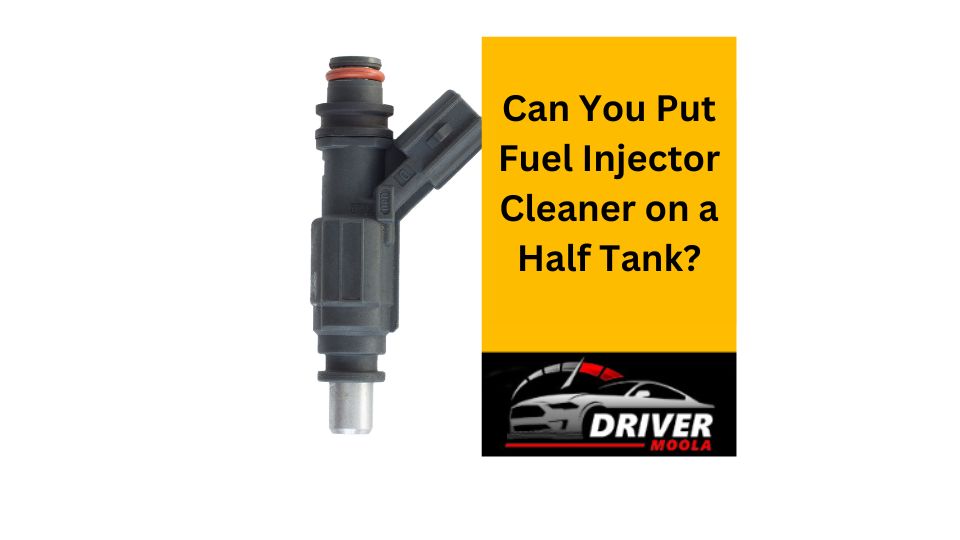In this article we are going to look at when you should use a fuel injector cleaner, whether can you put a fuel injector cleaner on a half tank of fuel, and offer other general tips. Let’s get to it.
Fuel Injector Cleaner Explained
Fuel injector cleaners are specially formulated products that help to clean the fuel injection system of a car engine which helps to keep your vehicle running smoothly and efficiently by removing harmful deposits from your fuel system.
It works by breaking down the residue buildup that can accumulate in your fuel injectors and combustion chamber, allowing your vehicle to run better and more economically.
Fuel injector cleaner is designed to remove carbon deposits, ethyl alcohol, and other contaminants that can get in the way of proper fuel injection. Regularly using a fuel injector cleaner can help to improve performance, reduce emissions, and prolong the life of your engine.
Can I put fuel injector cleaner in a half tank?
The answer to whether you can put fuel injector cleaner in a half tank is yes, but it may not be the best option.
While adding fuel injector cleaner to a partially full tank of gas will still help to clean the fuel injectors, it will be less effective than if you were to add it to a full tank.
This is because the cleaner needs to mix with the gasoline in order for it to be effective, and a smaller amount of gasoline means that less of the cleaner will be mixed in. Therefore, for optimal results, your best bet is always to add fuel injector cleaner when your tank is full.
How Does a Fuel Injector Cleaner Work?
The cleaner works by passing through the injectors and loosening up any accumulated deposits, such as fuel varnish, which can inhibit the proper flow of fuel into the engine. This prevents misfiring, stalling, and poor fuel economy caused by the build-up of deposits.
The loosened deposits are then burned away in engine combustion which results in improved idle smoothness, reduced emissions, and better fuel efficiency. Fuel injector cleaners can be added to fuel every time you fill your tank, especially if you use a lower octane fuel, or if your vehicle is feeling sluggish or less responsive.
When should I use fuel injector cleaner?
Fuel injector cleaner should be used every 3,000 to 5,000 miles or at every oil change. This is the most common recommendation from brands, though there are some that suggest using it every time you fill up but I don’t recommend this.
Depending on the age of your car and the quality of the fuel you are using, you may be able to go longer between treatments. It is also important to note that some fuel injector cleaners can damage your engine if overused and should only be used according to the directions on the package.
Using high-quality gasoline can also help reduce the need for a fuel injector cleaner as many already contain an additive designed to clean your fuel system.
Does fuel injector cleaner work immediately?
The effectiveness of fuel injector cleaners can vary based on the brand and formulation.
Many consumers report an immediate improvement in engine performance after using a cleaner, but this may be due to the product successfully removing moisture from the fuel lines and reducing misfires and knocking.
It typically takes several hundred miles of driving and burning a full fuel tank for the cleaner to begin working effectively, at which point noticeable improvements such as increased acceleration, higher fuel mileage, and smoother idling can be seen.
How to Use a Fuel Injector Cleaner?
Fortunately, it’s easy to use a fuel injector cleaner to keep your car running at its best. First, select a fuel injector cleaner that works with either diesel or gasoline engines. Then, remove the gas cap and pour the cleaner into the tank according to the instructions on the label. After you have filled the tank with the cleaner, fill it up with gas (given you don’t have any).
This will ensure that the mixture of gas and cleaner is distributed throughout your car’s engine. Finally, start your car and let it idle for a few minutes to allow the cleaner to do its job. Following these steps will help keep your car running at its efficiently and save you money on repairs in the long run.

Robert Anderson is a world class motorhead who rebuilt his first carb at age 10, his first engine at age 15, and completed his first full hotrod build when he was just 18! Previously, he has ran a part warehouse, delivered pizzas, and managed the service department for a $20 million/year revenue dealership. Robert knows cars like few others and he is passionate about sharing his knowledge.

